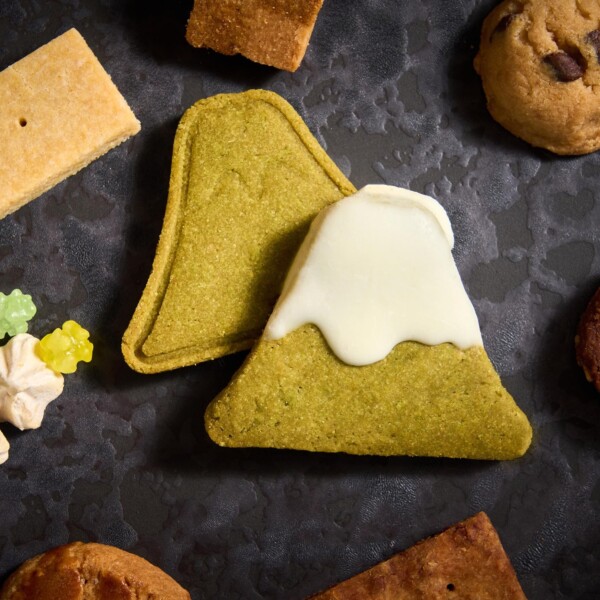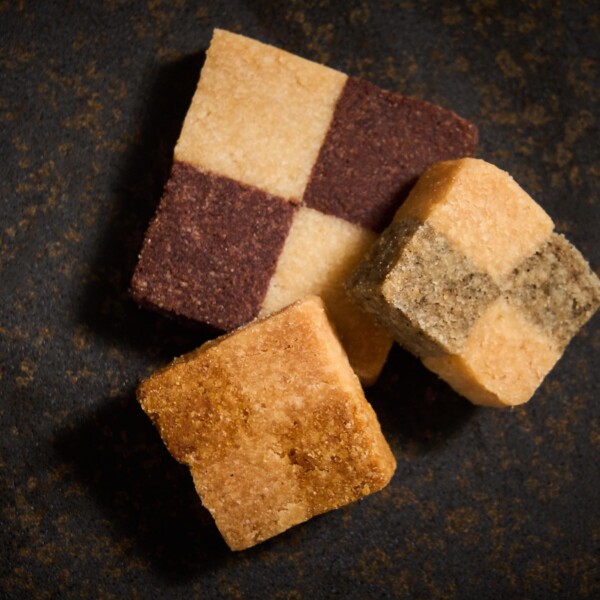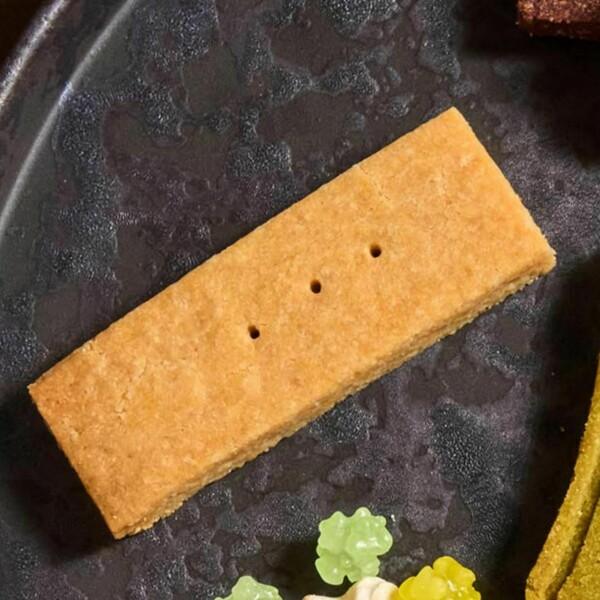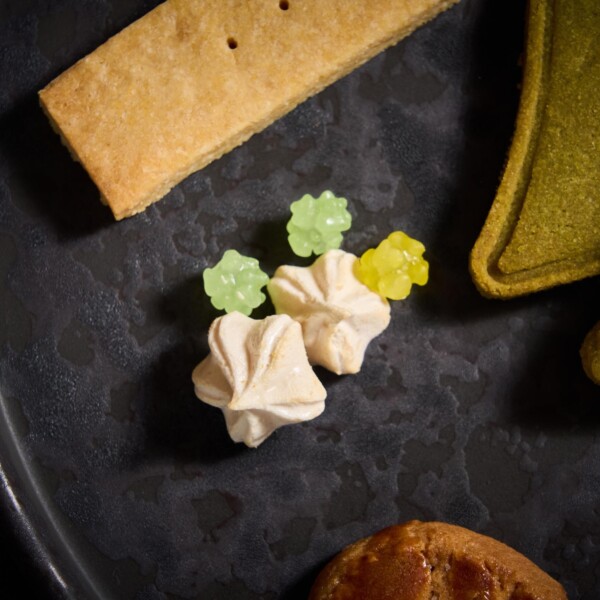"We wanted to create something gentle and heartfelt, something that lets you carry the memories of your journey home with you. That wish gave life to the Niseko Can Cookie."
The cookies are lovingly handmade by Momoko Kimura of Komeko no Okashi Momotoki, a local patissier known for her rice-flour sweets.
Each tin is filled with cookies made using locally grown rice flour from Rankoshi Town, an area celebrated for its pristine nature and fertile soil. Using ingredients sourced from the surrounding area brings an even more authentic taste of Niseko. The texture of each cookie has been carefully refined, and inside, you’ll find around ten varieties with delicate, crispy, crumbly, or crunchy finishes. Each bite is a new and gentle discovery, with just the right touch of sweetness.
The tin’s charming illustration is by sketch artist Naomi M, and features Mt. Yotei and the vibrant moss phlox blooms of Kutchan Town. It’s a springtime scene deeply cherished by locals, one that reflects both the grandeur of nature and the quiet beauty of the season.
Whether you’re bringing it home for yourself or gifting it to someone special, this heartfelt souvenir is a way to relive your time in Niseko, each time you lift the lid.
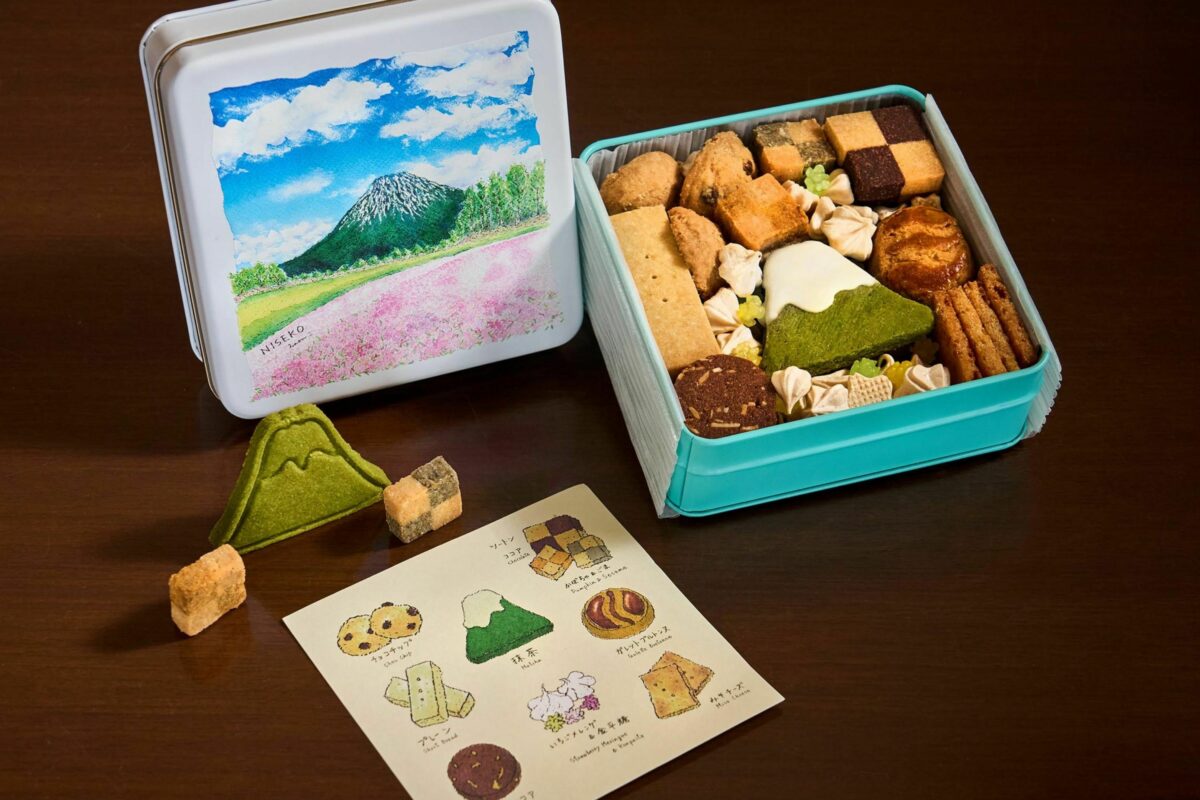
- Mt. Yotei: A bold matcha cookie with a gentle bitterness, inspired by Niseko’s iconic peak.
-
Two-Tone Squares: A colourful trio of cocoa, pumpkin, and black sesame in one cookie, with a satisfyingly crunchy texture.
-
Rectangles: Miso and cheese, an unexpectedly delicious combination that pairs beautifully with tea or sake, thanks to the balance offered by rice flour.
-
Konpeitō (Sugar Candy): Traditional Japanese sugar candies that add both colour and harmony to the tin.
-
Meringue: Cute and round with a light strawberry flavour, these were inspired by the delicate pink blooms of moss phlox.
In total, the tin includes around ten varieties, including familiar favourites like plain butter, chocolate chip, almond cocoa, and the airy, crisp galette bretonne. Each cookie offers a unique flavour and texture, creating a collection that delights both the eye and the palate.
Momoko Kimura’s journey into rice-flour sweets began with a meaningful connection to Kimura Farm, a rice farm in Rankoshi Town run by her husband’s family.
She was deeply moved by the strength and beauty of the rice, lovingly cultivated and passed down through generations. Inspired, she felt a strong desire to share its charm with more people through the form of rice flour confections. That heartfelt vision became the foundation of Momotoki.
The name blends two elements close to her heart: “Momo” from Momoko herself, and “Ki” from Kimura Farm. Together, they reflect a gentle and thoughtful approach to sweets-making, where care for people and the land come together in every creation.
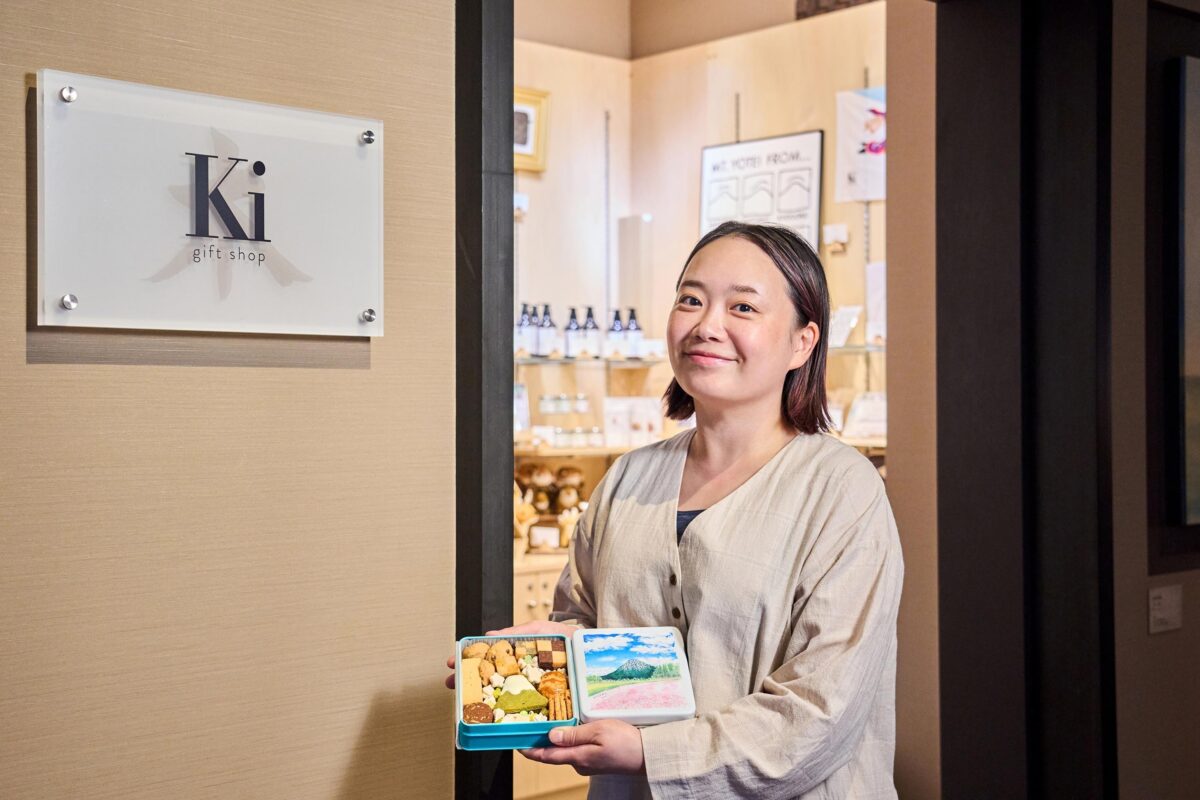
1. How did you decide on the cookie lineup?
Of course, creating something delicious was essential. But beyond that, I placed great importance on making sure the flavours, textures, and appearance would never feel repetitive or boring. Through repeated trials and tastings, I worked closely with everyone involved in the project to finalise the selection.
2. What do you find enjoyable and challenging about making baked goods with rice flour?
Cookies made with rice flour can often turn out too hard or dry. Even when using the same recipe, the variety or grain size of the rice can require adjustments. I always experiment with different combinations, to see how much moisture or fat to add, and what kinds to use. That process of trial and refinement is something I find both difficult and deeply enjoyable. I imagine that’s true not just with rice flour, but with baking in general.
3. What was your impression when you first saw the cookie tin artwork?
This may not be a direct answer about inspiration, but when I first saw Naomi’s artwork, I was absolutely enchanted. It felt like a framed painting, almost photographic in detail. I was so excited: What kinds of cookies should go into this beautiful tin? What kind of product could we create? That excitement stayed with me. As we refined the designs, I wanted to ensure that opening the tin felt seamless and joyful, that the inside matched the outside, and that the feeling of wonder continued right through to the last bite.
4. Were there any particular points you focused on when it came to taste and appearance?
The Mt. Yotei (matcha) and moss phlox (strawberry meringue) shapes were key motifs that came together from the very start. From there, I thought about including a mix of shapes, squares, circles, and a balance of flavours: sweet, subtle, even a touch of savoury. I also made sure the textures varied: some crisp, some crunchy, others melt-in-your-mouth. The idea was that no two cookies should feel the same. Whether someone enjoys the whole tin alone or shares it with a group, I imagined them discovering new favourites, sparking conversations, or simply enjoying a variety that suits all ages and preferences.
5. What’s the difference between your usual baking and creating a gift item like this cookie tin?
While I always pay close attention to sweetness and texture, one early challenge with the cookie tin was the colour, everything was coming out… brown! That’s fine when selling individual cookies, since they’re often presented with colourful linens, plates, or props. But in a tin, they all sit together. I initially tried creating a brown gradient, but it looked too dull. So I started introducing more variety, without relying on artificial colours. (The sugar candies are pre-coloured, but that’s the exception.) I learned just how delicate the balance is: adding colour with natural ingredients, making sure the hues stay vivid through baking, and still ensuring each cookie is properly cooked.
6. You’re using rice from your husband’s family farm in Rankoshi. What does that mean to you?
My father-in-law is the main grower of our Rankoshi rice today, and my husband, the fifth-generation farmer, runs a crepe shop. The rest of our family, spread across different regions, all come together to help with the farming. I’ve come to realise how much time, care, and effort goes into producing this rice, even more than I imagined. Without this key ingredient, not only would this cookie tin not exist, but neither would my work. I feel so much gratitude, for my husband, my father-in-law, our families, and the generations before us who kept this going.
7. What would you like people to feel when they receive this cookie tin?
When someone visits Niseko and chooses a local treat as a souvenir, I hope the cookies bring joy in the moment, and that the tin itself remains as a beautiful reminder of their journey. Even after the cookies are gone, I hope the tin brings back the sights and feelings of their trip. And for those who receive the tin as a gift, I hope the flavours and design offer a taste of Niseko that might even inspire them to visit one day.
As the leaflet says: “A taste of the journey, in every bite.”
Whether purchased on the spot or received from afar, I’d be thrilled if this little tin helps people hold Niseko close to their hearts.
A Taste That Says “I Want to Return” – Now in a Cookie Tin
Niseko Can Cookie (Made with Rice Flour): ¥3,500 (Tax Included)
Available in limited quantities starting Saturday, July 19, 2025, at the Ki Niseko Gift Shop (1st Floor).

